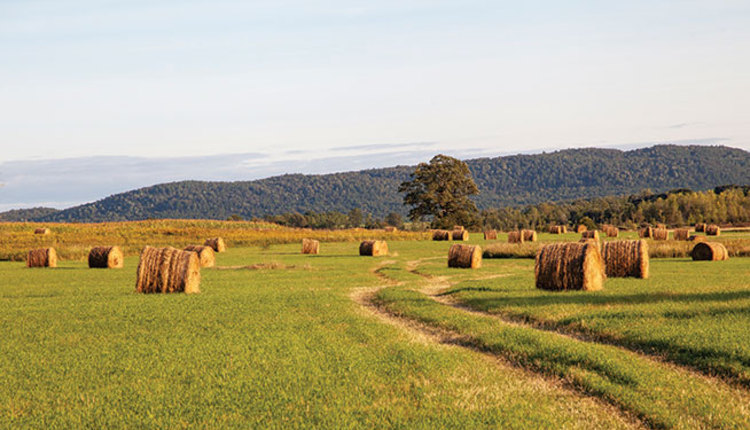Not all hay tests are the same |
| By Jason Banta |
|
|
The author is a beef cattle specialist for Texas A&M AgriLife Extension based in Overton, Texas.  As spring begins, it is a good time to look back and evaluate how the winter-feeding program went. Did the cows come through the winter in good condition or were they thinner than desired? Not having a good hay test to use when making winter supplementation and feeding decisions can easily lead to over or underfeeding cows. The best time to test hay will depend on the situation. If hay is being purchased, then ideally it should be tested prior to purchase. Sellers are often more willing to let someone test hay before purchase if they will pay for the test and share the results with the producer, regardless if they buy the hay or not. If the hay is raised and will be used on the operation, I like to wait until the fall to test the hay, but it can be sampled earlier if desired. Whenever possible, it is best to wait a few weeks after baling to test hay; this allows it to finish curing and accounts for any changes that might occur during storage. If hay is put up too wet and heating occurs, then protein availability can be reduced because of Maillard reactions. Maillard reactions form indigestible complexes between amino acids and carbohydrates. Although it is a simple test, many labs do not offer this analysis, which is found on forage test reports as heat-damaged protein or acid detergent insoluble crude protein (ADICP). Find a good lab In order to get a useful hay test, it is important to select a reputable, certified testing lab and also request the right tests for the forage being analyzed. Unfortunately, all testing labs are not the same and results can vary considerably between labs depending on the techniques being used and what quality control procedures are in place. Testing procedures can be divided into two main types: wet chemistry or near infrared reflectance spectroscopy (NIR). When done correctly and in the appropriate situation, both methods can work well, but they also have their strengths and weaknesses. Additionally, there are times when both types of tests will be used on the same sample. Wet chemistry is used to describe tests that measure the chemical fraction directly through digestion, combustion, and other techniques. For example, neutral detergent fiber (NDF) is measured by weighing a set amount of forage, putting it in a neutral detergent solution at a certain temperature for a given amount of time, and then washing the sample. After washing, the remaining sample is dried and weighed to determine the NDF content. Wet chemistry procedures will work on all samples, but they cost more and take more time to run. In simple terms, a sample analyzed using NIR is exposed to infrared light and the chemical bonds in the sample cause a specific spectra of light to be absorbed or reflected. These spectra of light can then be compared to a calibration dataset to determine the concentration of a specific feed component like crude protein or NDF. Only analyze samples with NIR when the lab has a good reference dataset similar to the sample being analyzed. Near infrared reflectance spectroscopy is cheaper and much quicker than wet chemistry, but it can’t be used on all samples. For example, NIR does not work well for ash or mineral analysis. In some situations, NIR can be used to analyze most feed components and a wet chemistry test can be added to analyze ash or specific minerals. Make sure it’s summative Total digestible nutrients (TDN) is a common term used to describe the energy content of hay. In addition to TDN, some reports will also list other terms (for example, digestible energy [DE] or net energy of maintenance, growth, or lactation [NEm, NEg, and Nel]) to describe the energy content of hay, but it is important to realize that these terms are derived from TDN. Unfortunately, TDN can’t be measured directly so it has to be estimated from other feed components. There can be considerable variation in the equations labs use to estimate TDN, which can result in significantly different TDN values from lab to lab. It is best to send samples to labs that use summative equations. Summative equations can account for differences in NDF digestibility and ash content, which can have huge impacts on TDN values. Ash content includes the minerals in the forage and any soil contamination. Before sending a sample in for analysis, it is always a good idea to visit with a nutritionist or whomever will help make feeding recommendations to see what lab(s) they recommend and what tests are most appropriate for the sample being analyzed. After hay tests have been paid for, it can be very frustrating to find out that the results are not helpful in making decisions because the appropriate tests were not used or the nutrition consultant does not have confidence in the selected lab. As a general rule, hay should at minimum be analyzed for crude protein, ADICP, NDF, NDF digestibility, crude fat, and ash. Minerals, nitrates, and other analyses can be added if needed. This article appeared in the March 2020 issue of Hay & Forage Grower on page 19. Not a subscriber? Click to get the print magazine. |
